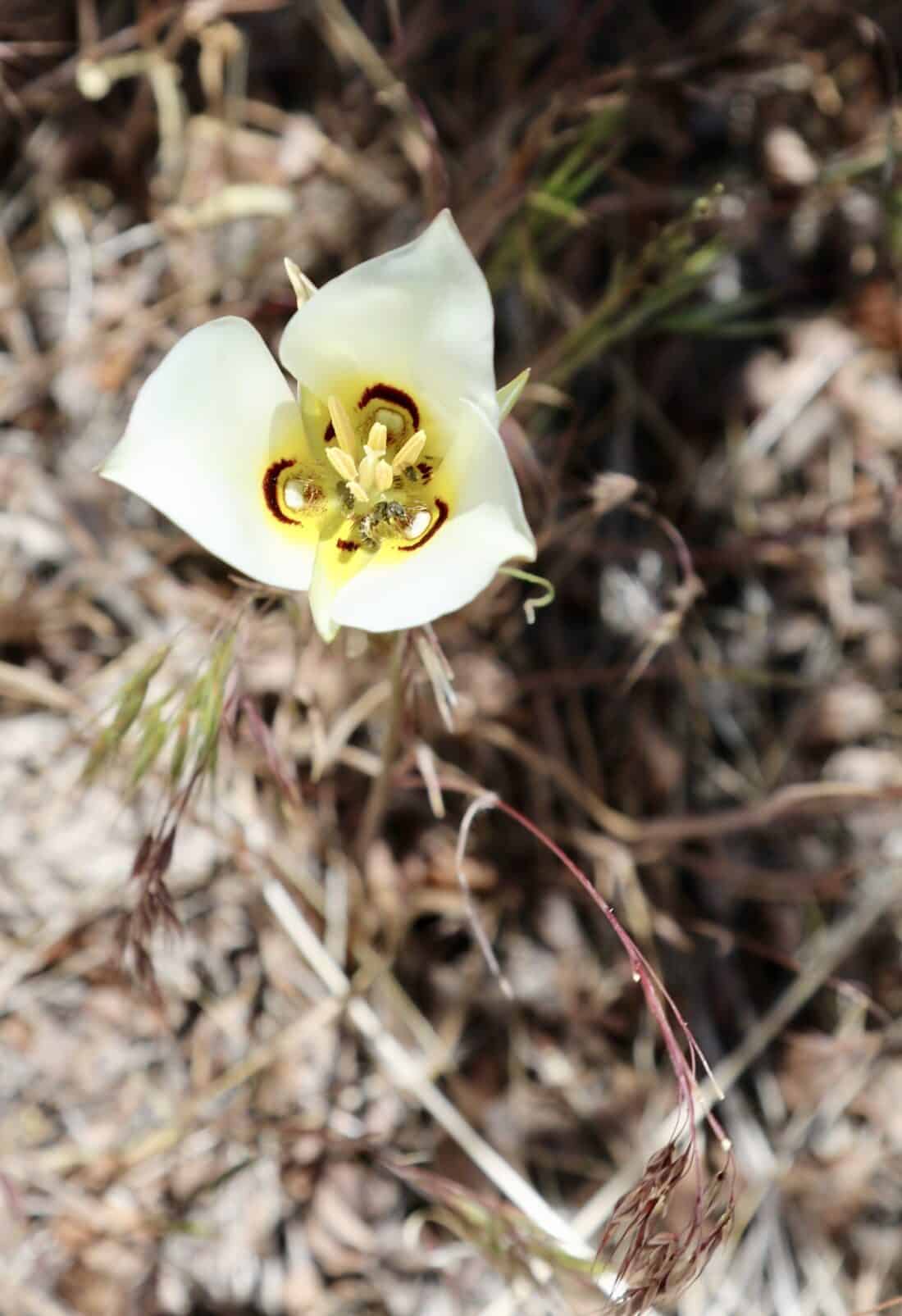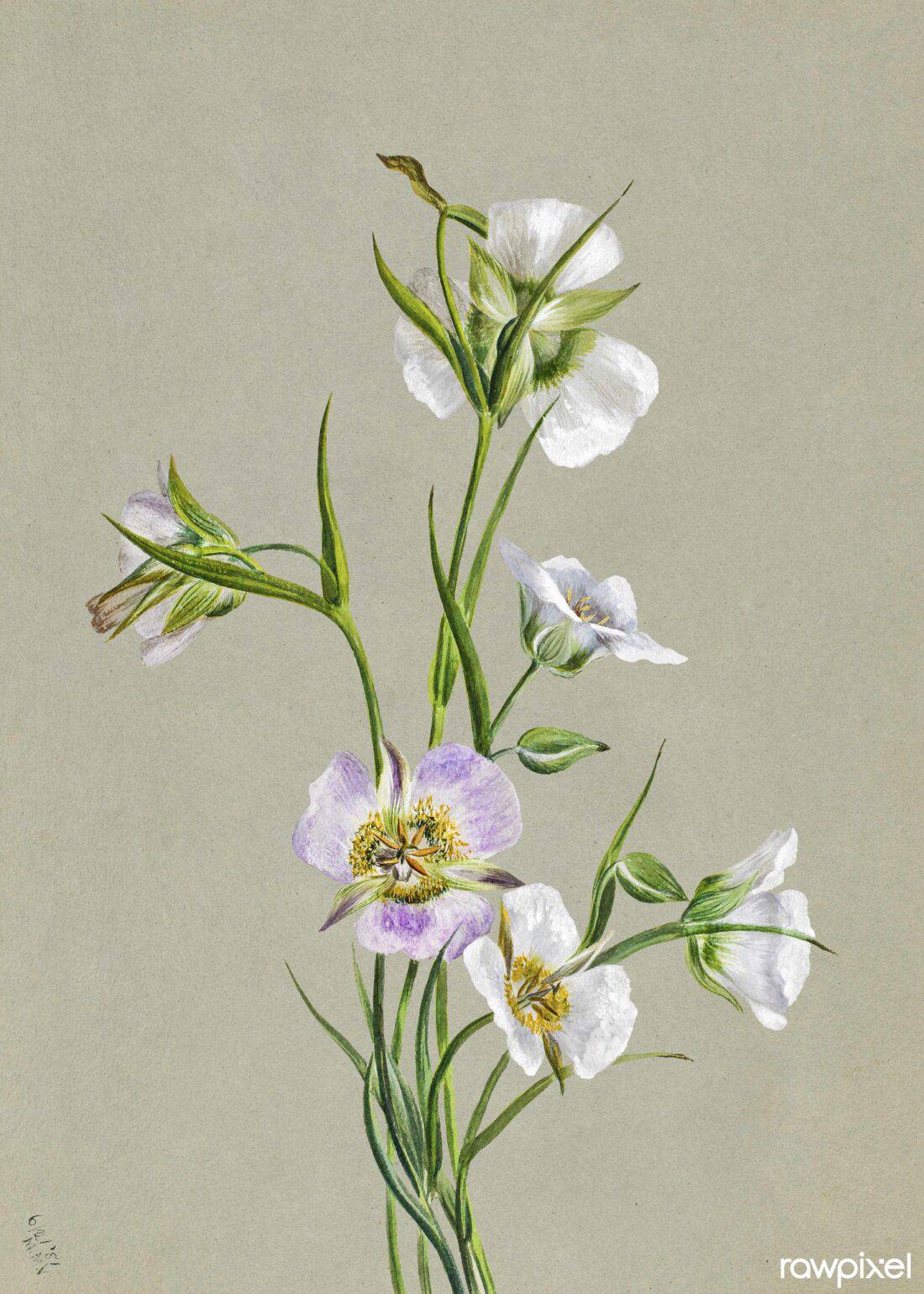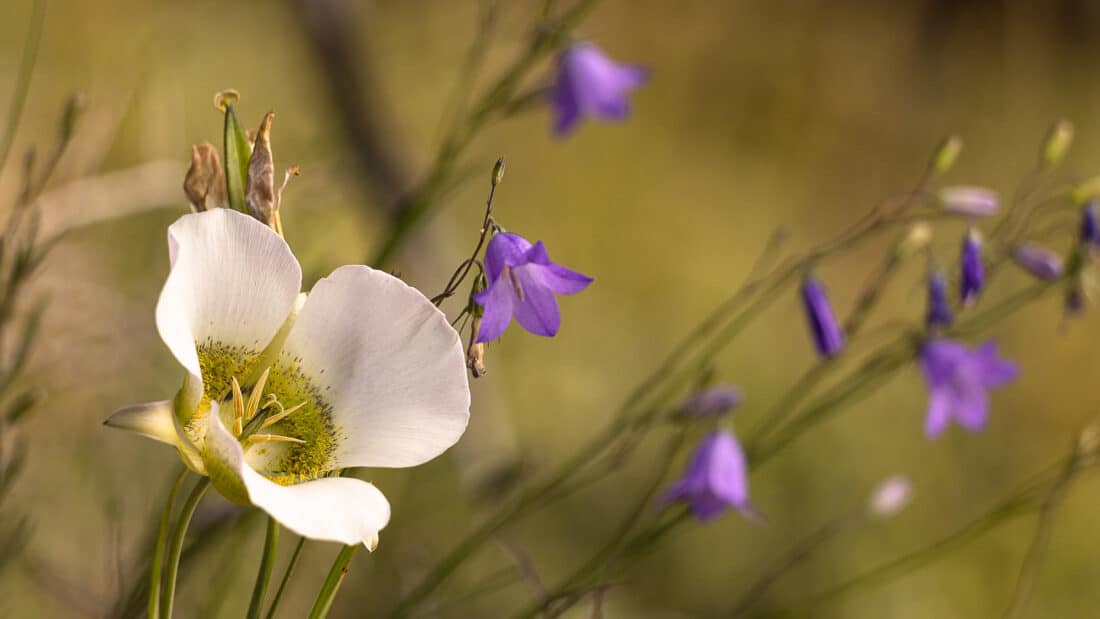The Sego Lily – Calohortus nutalli is a native bulb that blooms for about two weeks in June. It is rare in cultivated gardens and best enjoyed in the wild. Horticulturalists at Utah’s Red Butte Gardens report that they have tried to relocate wild bulbs on their property to around their visitor center but have struggled to have any of them survive. This would explain why you can find lots of information on the plant if you do an internet search – but only a handful of dodgy seed suppliers. (Buyer beware).

The Sego Lily has a rich ethnobotanical history. I highly recommend this video to learn more about how it was consumed by Native Americans and how it saved Mormon pioneers from a cricket-induced famine. The edible bulbs can still be harvested and eaten, but if you are on public lands, you do need to have special permission to dig them.
Native American Legend of the Sego Lily
Indian legend has it that many, many suns ago, when the native american indians lived in great numbers in the western US, life was abundant. But the Indians became jealous of each other, traded stick games for tomahawks, and began to war. The Great Spirit was displeased, and he dried up the corn and berries – the earth refused to yield. The Indians sorrowed and prayed to the Great Spirit. One day, the sun shone bright on the hills, and the people saw a little plant growing everywhere. When the Indians tasted the root, they knew the Great Spirit had saved them, and ever after, they refused to fight where the Sego Lily grew. They called it the ‘Little Life Plant of the Hills.'”
Sego is a Shoshone word that means edible bulb.


Planting and Growing Calohortus nutalli
Sego lilies grow 10-20 in. high from an onion-like bulb. One to three very showy, white to lavender-blue, tulip-like flowers are borne atop the stem in an umbel-like cluster. There are typically yellow markings in the throat of each single-stem flower.
It is a fascinating plant because it literally plants itself. Below ground, the Sego Lily has an amazing mechanism to move its bulb through the soil to an optimal depth. Following germination at or near the soil surface, the small bulb slowly moves deeper into the soil by contractile roots until it reaches a depth of 10 cm or more.
The Sego Lily (also known as the Mariposa Lily) is a beautiful native plant that is protected in Utah (Sego Lilies are the Utah state flower and you can see them regularly referred to in state symbolism as well as being a revered plant in the Mormon church. where it is the state flower).
If you love the look, you can plant it or other varieties of Calohortus (there are about 60 species of Calohortus – some are very rare, but others are available to gardeners via seed and are a bit more flexible regarding restrictions ). They are notoriously difficult to grow, they prefer sandy soil and grow wild in open grass areas. Pacific Bulb Society has a page full of tips on how to cultivate these beautiful western North American natives.
I miss your series with the artist dresses/outfits and matching the design with flowers, furniture and accessories. I’m sure it is a lot of work but it is so different from what everybody else does in their garden blogs.
wow! really lovel pictures!
Sheila – I miss that series too…I have been thinking of bringing it back…but you are correct…the main reason for letting it go was the immense amount of time it took to put each together….always juggling..